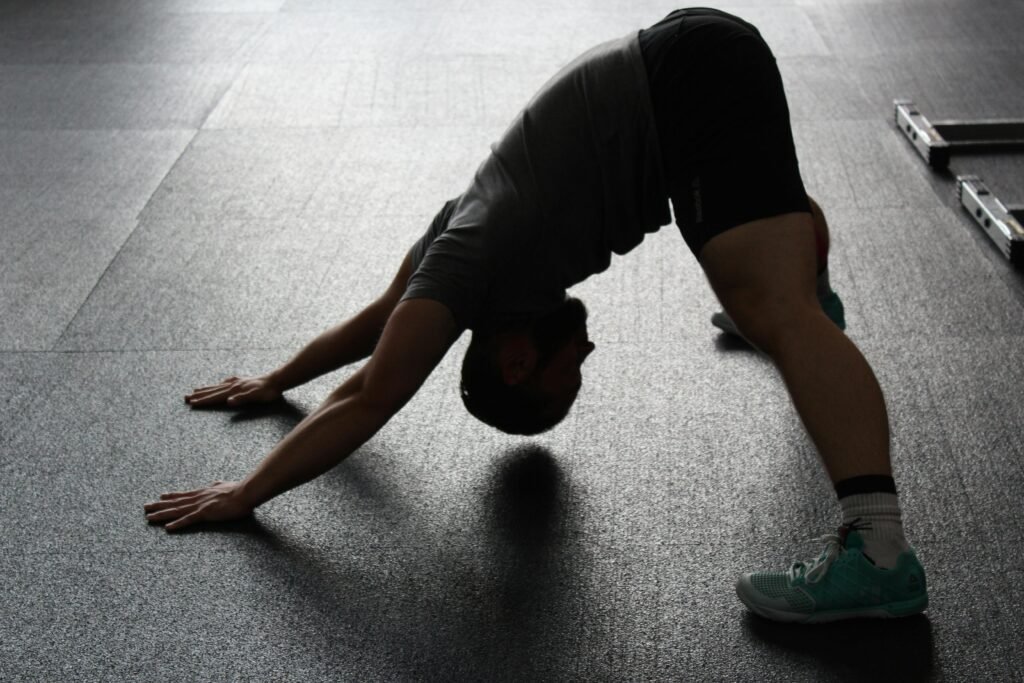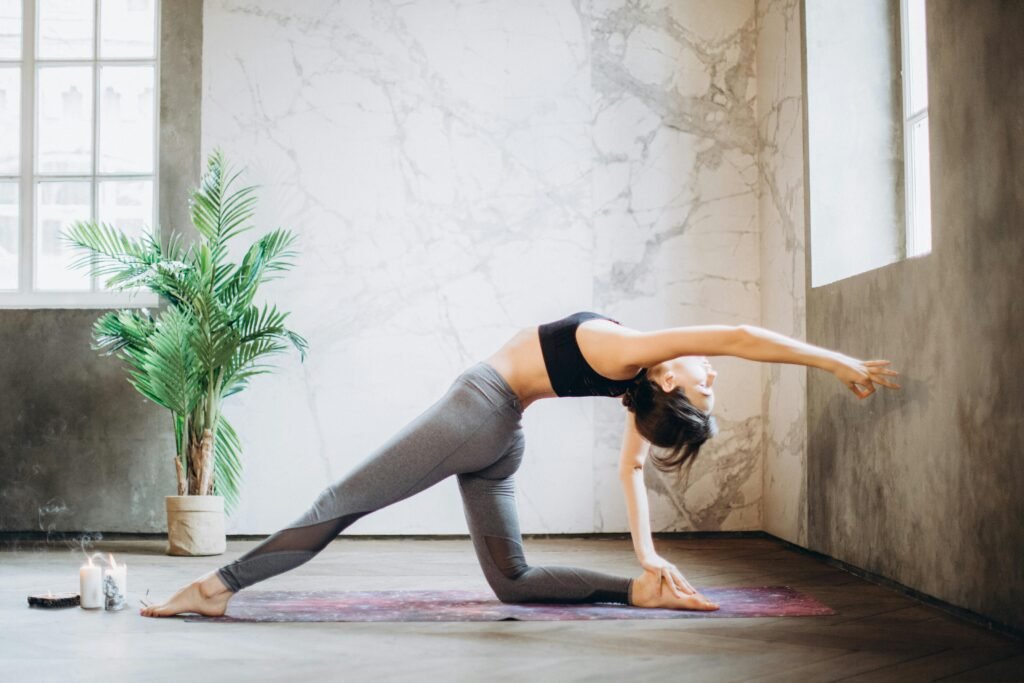
Welcome to an article all about maximizing flexibility through proper stretching techniques. In this overview, you will learn the importance of flexibility, how stretching can help improve your range of motion, and the best practices for incorporating stretching into your daily routine. Whether you are an athlete looking to enhance performance or simply want to improve your overall well-being, this article is here to guide you on your flexibility journey. So grab your yoga mat and let’s dive into the world of stretching!
Maximizing Flexibility with Proper Stretching
Are you looking to improve your flexibility but not sure where to start? Stretching is not only beneficial for athletes but for everyone wanting to increase their range of motion and prevent injuries. In this article, we will explore different stretching techniques and how to properly incorporate them into your routine to maximize flexibility.

This image is property of images.pexels.com.
Find more product like these on Amazon!
The Importance of Flexibility
Flexibility plays a crucial role in overall health and well-being. Not only does it improve joint range of motion, but it also helps prevent injuries, reduce muscle soreness, and enhance athletic performance. By incorporating regular stretching into your routine, you can increase your flexibility and improve your overall quality of life.
Dynamic vs. Static Stretching
Dynamic Stretching
Dynamic stretching involves moving your muscles and joints through a full range of motion in a controlled manner. This type of stretching helps increase blood flow to your muscles, improve joint stability, and prepare your body for physical activity. Examples of dynamic stretches include leg swings, arm circles, and walking lunges.
Dynamic stretching is ideal for warming up before a workout or sports activity. It helps increase your body temperature and heart rate, making your muscles more pliable and ready for exercise. Remember to perform dynamic stretches in a controlled and fluid motion to avoid injury.
Static Stretching
On the other hand, static stretching involves holding a stretch in a specific position for a prolonged period, usually 15-30 seconds. This type of stretching helps increase muscle length, improve flexibility, and reduce muscle tension. Examples of static stretches include hamstring stretches, shoulder stretches, and calf stretches.
Static stretching is best performed after a workout or physical activity when your muscles are warm. It helps reduce muscle soreness, improve circulation, and promote relaxation. Remember to breathe deeply and relax into each stretch, avoiding any jerking or bouncing movements.
Stretching Techniques
Proprioceptive Neuromuscular Facilitation (PNF) Stretching
PNF stretching is a highly effective technique that involves stretching and contracting specific muscle groups to improve flexibility. This type of stretching utilizes the body’s natural reflexes to enhance muscle length and range of motion. PNF stretching is often done with a partner or with the help of a prop, such as a resistance band or a stability ball.
To perform PNF stretching, start by stretching the target muscle group gently for 10-15 seconds. Then, contract the muscle by pushing against the resistance for another 5-10 seconds. Finally, relax and stretch the muscle again, allowing it to lengthen further. Repeat this process 2-3 times for optimal results.
Active Isolated Stretching (AIS)
AIS is a stretching technique that involves actively contracting one muscle group while stretching the opposite muscle group. This technique helps increase flexibility and improve muscle function by targeting specific muscle groups individually. AIS is often used by athletes and physical therapists to enhance performance and prevent injuries.
To perform AIS, focus on isolating a specific muscle group and gently stretching it to its end range of motion. Hold the stretch for 1-2 seconds, then release and repeat the stretch 8-10 times. Make sure to breathe deeply and avoid any bouncing or jerking movements. AIS can be done before or after a workout to improve flexibility and muscle function.
Incorporating Stretching Into Your Routine
Pre-Workout Stretching
Before starting any physical activity or workout, it is essential to warm up your muscles and joints with dynamic stretching. Perform a series of dynamic stretches targeting the major muscle groups, such as your legs, arms, and core. Focus on controlled movements and gradually increase the intensity of your stretches to prepare your body for exercise.
Pre-workout stretching helps reduce the risk of injuries, improve muscle elasticity, and enhance athletic performance. Spend 5-10 minutes warming up with dynamic stretches to increase blood flow, flexibility, and joint mobility. Remember to listen to your body and avoid any stretches that cause pain or discomfort.
Post-Workout Stretching
After completing your workout or physical activity, it is crucial to cool down your muscles and allow them to relax with static stretching. Perform a series of static stretches targeting the muscles you worked during your workout, holding each stretch for 15-30 seconds. Focus on breathing deeply and relaxing into each stretch to promote muscle recovery and flexibility.
Post-workout stretching helps reduce muscle soreness, improve circulation, and prevent muscle tightness. Spend 10-15 minutes stretching your major muscle groups, such as your hamstrings, quadriceps, and shoulders, to enhance flexibility and prevent injuries. Remember to hydrate, refuel, and rest after stretching to maximize your recovery.

This image is property of images.pexels.com.
Tips for Effective Stretching
Listen to Your Body
One of the most important tips for effective stretching is to listen to your body and pay attention to how it feels during each stretch. Avoid pushing yourself too hard or stretching beyond your limits, as this can lead to injuries and muscle strain. Instead, focus on maintaining a gentle and consistent stretch to gradually increase your flexibility over time.
Stay Consistent
Consistency is key when it comes to stretching and improving flexibility. Make stretching a regular part of your daily routine, whether before or after exercise, to see optimal results. Set aside time each day to stretch your major muscle groups and focus on proper technique to prevent injuries and enhance your flexibility.
Use Props and Tools
Incorporating props and tools into your stretching routine can help enhance your flexibility and deepen your stretches. Resistance bands, foam rollers, yoga blocks, and stability balls are excellent tools to assist with stretching and target specific muscle groups. Experiment with different props to find what works best for your body and helps you achieve a deeper stretch.
Stay Hydrated and Rested
Hydration and rest play a vital role in the effectiveness of your stretching routine. Make sure to drink plenty of water throughout the day to keep your muscles hydrated and prevent cramping. Additionally, prioritize getting an adequate amount of rest and sleep to allow your muscles to recover and repair after stretching. Proper hydration and rest can improve muscle flexibility and overall performance.
Conclusion
Incorporating proper stretching techniques into your routine can help maximize flexibility, prevent injuries, and enhance athletic performance. By understanding the importance of flexibility, incorporating dynamic and static stretching, and following effective stretching techniques, you can improve your range of motion and overall quality of life. Remember to listen to your body, stay consistent with your stretching routine, and use props and tools to deepen your stretches. With dedication and patience, you can achieve optimal flexibility and reap the many benefits of a flexible body.

